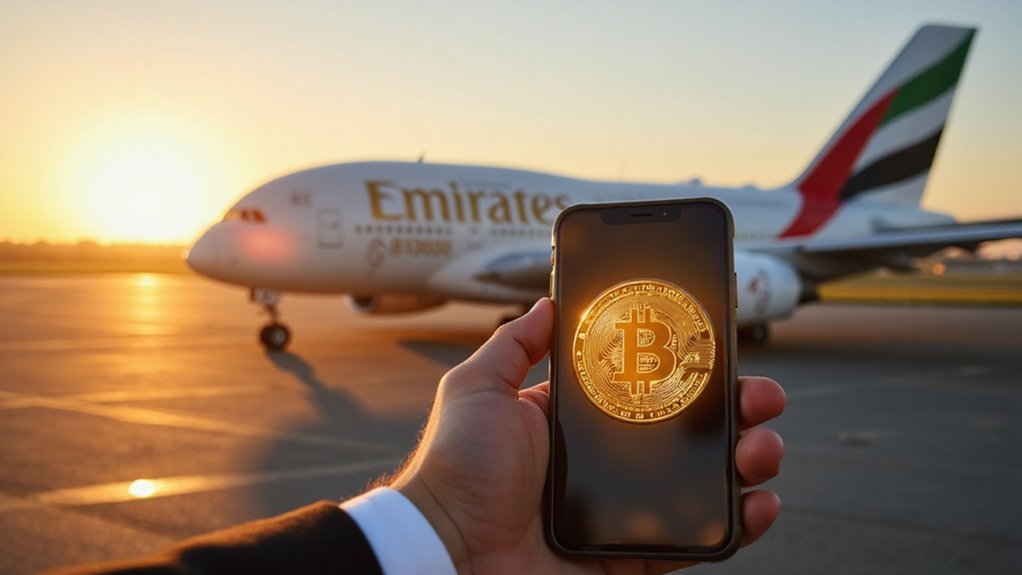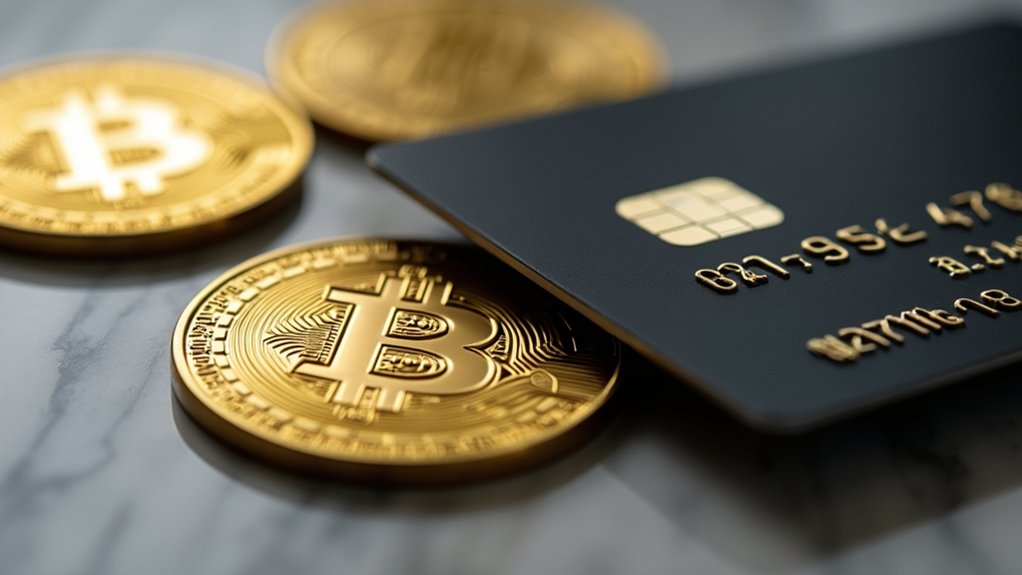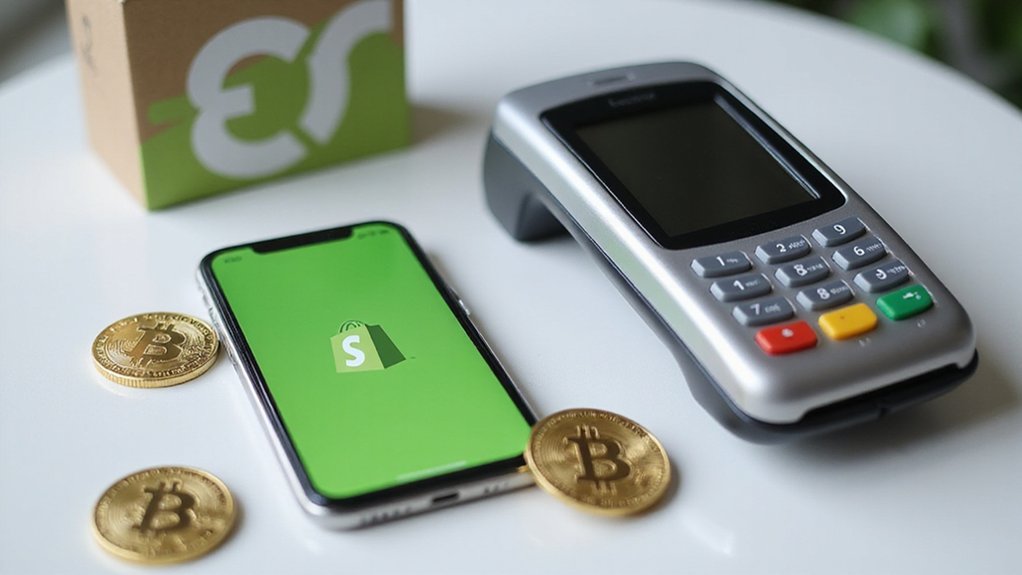While European consumers once fumbled for exact change at corner shops and cafés, they now increasingly reach for crypto cards to handle transactions under €10—a shift that represents 45% of all crypto card purchases across the continent. This micro-spending revolution has quietly dismantled traditional banking‘s grip on everyday commerce, with cryptocurrency-backed payment cards emerging as the preferred vehicle for digital natives who apparently find Bitcoin more trustworthy than their neighborhood bank.
Digital natives have quietly abandoned traditional banking for crypto cards, finding blockchain more trustworthy than their neighborhood bank.
The numbers reveal a payment ecosystem in flux: crypto card transactions average €23.7 compared to traditional bank cards’ €33.6, suggesting these digital payment instruments have found their niche in smaller-value purchases. More tellingly, crypto card users conduct online payments twice as frequently as their traditional counterparts, indicating not merely preference but behavioral transformation. When 40% of crypto card transactions occur online—nearly double the eurozone’s 21% average—the implications extend beyond convenience into fundamental shifts in consumer trust.
Stablecoins dominate this landscape, comprising 73% of transactions, with Bitcoin, Ethereum, and Solana filling supporting roles. The prevalence of stablecoins (ostensibly designed to avoid cryptocurrency’s notorious volatility) suggests users seek digital payment benefits without the roller-coaster experience of watching their coffee purchase fluctuate in value before reaching the barista. Behind this preference lies stablecoins’ impressive processing capacity, which handles $8 trillion annually in value transfers globally, demonstrating the infrastructure’s maturity for everyday transactions.
Traditional financial institutions now face an uncomfortable reality: crypto cards rival their performance in transactions under €50, precisely the territory banks considered unassailable. The irony is palpable—while banks spent decades perfecting contactless payments and mobile wallets, cryptocurrency enthusiasts simply bypassed the entire infrastructure with blockchain-based alternatives offering near-instant settlements and lower fees.
Europe’s 15% year-on-year surge in crypto card orders during early 2025 reflects more than technological curiosity; it signals genuine market disruption. From groceries (59% of purchases) to dining (19%) and transport, crypto cards have infiltrated quotidian commerce with remarkable efficiency.
Financial institutions increasingly partner with crypto card providers—a tacit acknowledgment that resistance proves futile when consumers abandon cash for digital assets. This alteration suggests Europe approaches a genuinely cashless payment ecosystem, though perhaps not the one traditional banks envisioned when they first championed digital payments.









